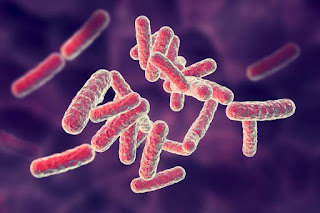Pseudomonas in wastewater treatment
Pseudomonas in wastewater treatment-
Source- Céline Slekovec, Julie Plantin, and Didier Hocquet
Pseudomonas is a genus of Gram-negative, Gammaproteobacteria, belonging to the family Pseudomonadaceae and containing 191 validly described species. The members of the genus demonstrate a great deal of metabolic diversity and consequently are able to colonize a wide range of niches.
Pseudomonas aeruginosa was isolated consistently from domestic and hospital sewage. In domestic sewage the numbers were usually less than 30,000 per 100 ml whereas counts above 500,000 per 100 ml were frequently obtained in hospital sewage. Correspondingly high counts of Escherichia coli were not found in hospital sewage and the ratio of E. coli to P. aeruginosa was usually less than 25 compared to ratios of over 500 often found in ordinary domestic sewage. During passage through sewage treatment plants the numbers of both bacteria were reduced by about 90% so that their ratio in the effluent remained the same as in raw sewage.
In samples from a fresh-water stream the numbers of P. aeruginosa reflected the levels of domestic pollution. Variations in the counts of the organism over the length of the stream usually closely paralleled those of E. coli. However, in samples taken from the stream in lightly populated, agricultural areas P. aeruginosa was frequently not isolated even when the counts of E. coli were high. This was consistent with results from examinations of faucal specimens which confirmed the presence of P. aeruginosa in humans but indicated that in animals the organism was not present in significant numbers.
Lipase from Pseudomonas aeruginosa LP602, a bacterial strain isolated from a domestic wastewater sample, was preliminarily characterized. The enzyme exhibited maximum lipolytic activity at pH 8.0 where it was also stably maintained. At 55°C, the lipase had the highest activity but not stability. The enzyme was insensitive to EDTA and to many ions tested except Zn2+. It was sensitive to SDS but not to Tween-20, Tween-80 or Triton X-100. The enzyme was active towards a number of commercial food grade fats and oils. A suitable medium formula for lipase production was MMP containing 6.25% whey as a carbon source, 1% soybean oil as inducer and 0.5% yeast extract supplement. The culture was fed with glucose to a final concentration of 0.1% at the 15th hour of incubation. Lipase production under this condition was 3.5 U ml−1. Both P. aeruginosa LP602 cells and the lipase were shown to be usable for lipid-rich wastewater treatment.



Fabulous
ReplyDeleteGreat Work..
ReplyDeleteSuperb👌
ReplyDeleteExcellent Work
ReplyDeleteExcellent. Keep going
ReplyDeleteExcellent
ReplyDeleteGood work
ReplyDeleteWonderful
ReplyDeleteGood
ReplyDeleteGood
ReplyDeleteExcellent work . Really informative as to how the addition of soybean oil as inducer and then using glucose at 15th hour of incubation improves the effectiveness
ReplyDeleteGreat job
ReplyDelete